 |
 |
 |
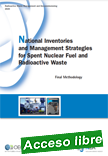 |
National Inventories and Management Strategies for Spent Nuclear Fuel and Radioactive Waste: Final Methodology
OECD. Nuclear Energy Agency, 2020. (NEA No. 7424). Published: Oct 2021. 92 p.
The diversity in classification schemes across countries has restricted the possibility of comparing waste inventories and led to difficulties in interpreting waste management practices, both nationally and internationally. To help improve this situation, the OECD Nuclear Energy Agency (NEA) developed a methodology that ensures consistency of national radioactive waste and spent fuel inventory data by presenting them in a common scheme in direct connection with accepted management strategy and disposal routes.
|
This report provides the final version of the methodology and presenting scheme for spent nuclear fuel and the radioactive waste of all existing types. Additionally, there are recommendations in the report on how to enhance the comparability of national inventory data using the NEA methodology. The NEA support for joint efforts of the International Atomic Energy Agency and the European Commission on harmonisation of the reporting process by member countries to the Joint Convention and European Council Directive 2011/70 EURATOM is also presented in the report.
|
 |
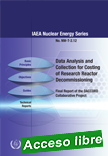 |
Data Analysis and Collection for Costing of Research Reactor Decommissioning: Final Report of the DACCORD Collaborative Project
IAEA Nuclear Energy Series NW-T-2.12 ¦ English ¦ STI/PUB/1942 ¦ 127 pages ¦ Date published: 2021
This publication focuses on cost estimations for decommissioning of research reactors, which can be very broad in scope with many possible inputs, influencers and impact of decisions. It covers use of the CERREX-D2 code by non-experts; increasing information on UFs for research reactor decommissioning;
|
providing a basis for estimating uncertainties and contingencies; assessing the impact of decommissioning planning and characterization activities; and supporting participating Member States in developing plans and cost estimates using the CERREX-D2 code.
|
 |
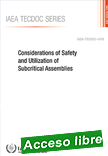 |
Considerations of Safety and Utilization of Subcritical Assemblies
IAEA TECDOC No. 1976 ¦ English ¦ 100 pages ¦ Date published: 2021
This publication was developed in view of the growing interest from Member States in subcritical assemblies (SCAs). It supplements the IAEA safety standards by providing practical information on safety in the design and operation of SCAs. It also provides information on and examples of utilizing SCAs for various types of research and training experiments.
|
.
|
 |
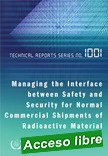 |
Managing the Interface between Safety and Security for Normal Commercial Shipments of Radioactive Material
Technical Reports Series No. 1001 ¦ English ¦ STI/DOC/010/1001 ¦ 80 pages ¦ Date published: 2021
Regulations governing the safe transport of radioactive material have been developed and maintained at the international and national levels for more than six decades. More recently, similar efforts have been initiated for security during the transport of radioactive material; however, safety and security provisions have typically been developed independently.
|
The aim of this publication is to provide technical guidelines and practical information to assist Member States, competent authorities and operators in ensuring an integrated and coordination approach. Based on international good practices, its use will facilitate the management of the interface between nuclear safety and security during normal commercial shipments of radioactive material that pose a low radiological consequence if attacked by an adversary.
|
 |
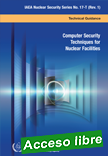 |
Computer Security Techniques for Nuclear Facilities
IAEA Nuclear Security Series No. 17-T (Rev. 1)
English ¦ STI/PUB/1921 ¦ 140 pages ¦ Date published: 2021
This revision provides guidance on how to establish or improve, develop, implement, maintain, and sustain computer security within nuclear facilities. This publication addresses the use of risk informed approaches to establish and enhance computer security policies, programmes; it describes the integration of computer security into the management system of a facility;
|
establishes a systematic approach to identifying facility functions and appropriate computer security measures that protect sensitive digital assets and the facility from the consequence of cyber-attacks consistent with the threat assessment or design basis threat.
|
 |
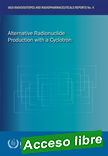 |
Alternative Radionuclide Production with a Cyclotron
IAEA Radioisotopes and Radiopharmaceuticals Reports No. 4
STI/PUB/1937 ¦ English ¦ 69 pages ¦ Date published: 2021
Cyclotrons are currently used for the preparation of a wide variety of radionuclides that have applications in single photon emission computed tomography (SPECT) and positron emission tomography (PET). Consequently, there is high demand from IAEA Member States for support in the area of radiopharmaceutical production using cyclotron produced radioisotopes.
|
This publication describes the potential radionuclide production routes using cyclotrons in different energy ranges and provides methods for the development of targets and provides details of the chemistry for the separation of radionuclides from target materials. The readership of this publication includes scientists, operators interested in putting this technology into practice, technologists already working with cyclotrons who wish to enhance the utility of existing machines, and managers in the process of setting up radionuclide facilities in their countries. Students working towards higher level degrees in related fields may also benefit from this publication.
|
 |
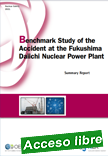 |
Benchmark Study of the Accident at the Fukushima Daiichi Nuclear Power Plant.
Summary report
OECD. Nuclear Energy Agency, 2021. (NEA No. 7425). 68 p.
Understanding the accident at the Fukushima Daiichi Nuclear Power Plant is important for safe and timely decommissioning of the reactors. This objective, together with the development of better computer codes for analysis of severe accidents, was the aim of the benchmark study conducted under the auspices of the OECD Nuclear Energy Agency.
|
Through the diversity of the modelling codes and approaches, and the use of parametric studies, it has been possible to identify the more likely scenarios that can fit with the limited data available from the accident. The insights gained from the project will help guide research into severe accident behaviour, improve severe accident computer codes, develop accident mitigation and response at nuclear power plants, support regulatory oversight related to severe accidents, and inform policies on the development and deployment of nuclear technology.
|
 |
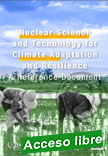 |
Nuclear Science and Technology for Climate Adaptation and Resilience. A Reference Document
Vienna: IAEA, Sep 2021. 38 p.
In the run up to the 26th United Nations Climate Change Conference, COP26, the International Atomic Energy Agency (IAEA) has published a comprehensive report setting out how nuclear techniques can help the world adapt to a changing climate and become more resilient to extreme weather events. The new publication Nuclear Science and Technology for Climate Adaptation and Resilience offers case studies of IAEA supported projects in countries where nuclear techniques are used to tackle climate related food, water and marine challenges.
|
It outlines a wide range of existing nuclear techniques that support sustainable land and water management, climate smart agriculture, food production systems, analysis of greenhouse gas emissions, coastal protection and the monitoring of ocean change.
|
 |
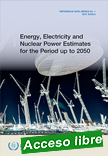 |
Energy, Electricity and Nuclear Power Estimates for the Period up to 2050
2021 Edition. Reference Data Series No. 1
IAEA-RDS-1/41 ¦ English ¦ 146 pages ¦ Date published: 2021
The 41st edition of RDS-1 contains estimates of energy, electricity and nuclear power trends up to the year 2050. The publication is organized into world and regional subsections, with global and regional nuclear power projections presented as low and high cases, encompassing the uncertainties inherent in projecting trends.
|
.
|
 |
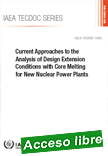 |
Current Approaches to the Analysis of Design Extension Conditions with Core Melting for New Nuclear Power Plants
IAEA-TECDOC-1982 ¦ English ¦ 168 pages ¦ Date published: 2021
The focus of this publication is on collecting current practices in Member States related to design extension conditions (DECs) with core melting. The information provided is based on the feedback from technical experts from Canada, France, Finland, India, the Islamic Republic of Iran, the Russian Federation, and the United States of America. There is, however, still no common understanding of DECs due to the complexity of phenomena and insufficient experimental data.
|
This publication identifies current approaches of IAEA Member States with active nuclear power programmes and discusses the regulatory perspective and technical rationale. It attempts to find common practices and possible areas for harmonization of the main rules related to the analysis of DECs with core melting for new water cooled reactors, including their selection for the safety demonstration.
|
 |
| |
|
|

|
|
|
| |
|
|
| |
| |
|
|
| |
| |
|
|
| |
| |
|
|
|
| |
| |
